North America Prefab Wood Building Market Size
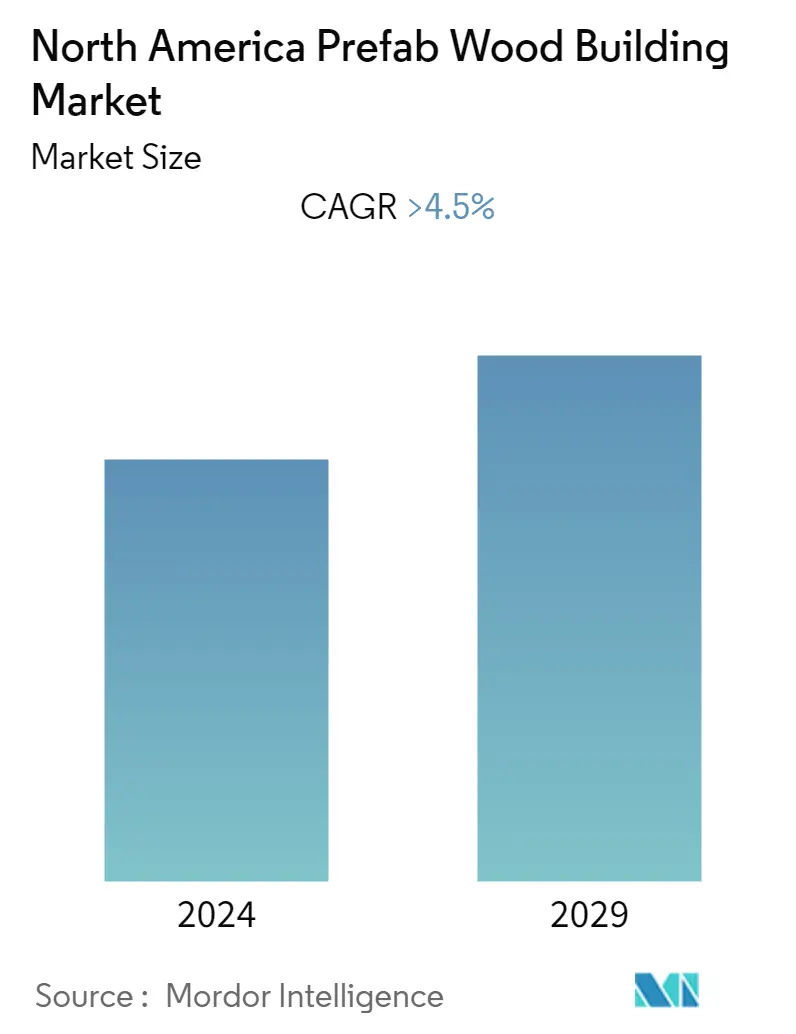
| Study Period | 2020 - 2029 |
| Base Year For Estimation | 2023 |
| Forecast Data Period | 2024 - 2029 |
| Historical Data Period | 2020 - 2022 |
| CAGR | 4.50 % |
| Market Concentration | Low |
Major Players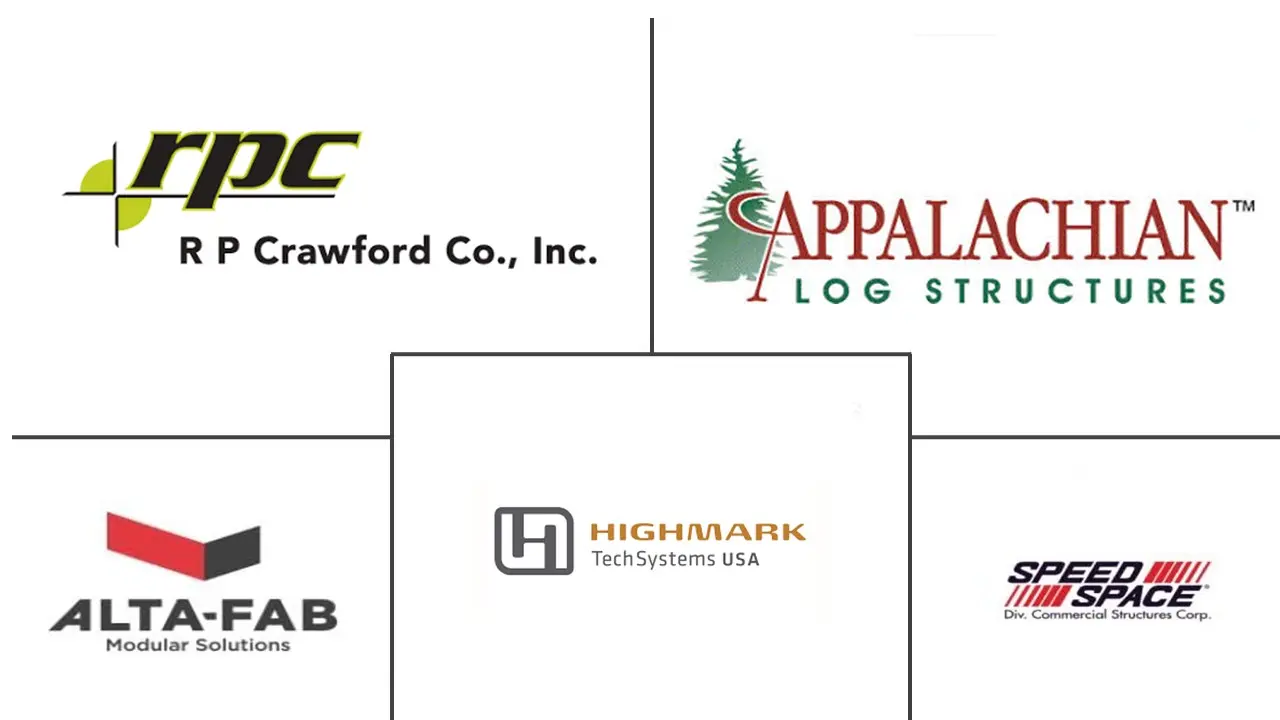
*Disclaimer: Major Players sorted in no particular order |
North America Prefab Wood Building Market Analysis
The size of North America Prefab Wood Building Market is ~USD 4 billion in the current year and is anticipated to register a CAGR of over 4.5% during the forecast period.
- The productivity of various building projects in North America has been delayed due to a manpower shortage during COVID-19. In addition, the pandemic has boosted offsite construction in North America, which offered improved safety, reduced risk, and greater certainty of completion on time and within budget. The combination of additive manufacturing with energy-absorbing materials, such as micro houses, is expected to boost regional industrial growth. Other factors driving growth include rapid urbanization in developing parts of the region and increased investment in the real estate sector.
- The US economy is also driven by massive internal migration. Americans are known for a tendency to move all over the country. Roughly 35.5 million Americans move each year, and over the years people may change homes up to five times. Building wooden houses, quickly and affordably, allows them to easily relocate without leaving too much behind. The United States is a country of speed, convenience, and ready-made solutions. That's reflected in their cuisine, their work culture, and most definitely their housing preferences.
- The prefabricated wood building manufacturing business is made up of around 570 companies that employ over 19,000 people and produce approximately USD 4.4 billion per year. New federal and state laws, requiring structural integrity and consistent construction methods, were adopted. Plywood, plastics, and aluminum, all of which were subsequently used in wood prefab units, increased sales as well.
- The United States Department of Commerce released a final finding in the third annual assessment of Canadian softwood lumber imports, lowering the tariff rate from 17.99% to 8.59%. Industry groups such as the NAHB and the National Lumber and Building Material Dealers Association have been lobbying for lower tariffs on Canadian softwood lumber to enable more affordable housing.
North America Prefab Wood Building Market Trends
This section covers the major market trends shaping the North America Prefab Wood Building Market according to our research experts:
Increasing Government Initiative is assisting Canada's Prefab growth
As Canada transforms into a net-zero economy, the government of Canada encourages buildings and projects that employ sustainable and renewable resources. The efficient and creative use of Canadian forest products has the potential to revolutionize the building sector.
As a result of this shift, mass wood, and modular building are now leading materials and methods for energy-efficient and cost-effective construction. Mass wood and new, creative modular construction technologies, which are lighter than traditional building materials but equivalent in strength, are vital in moving toward a greener future. The Minister of Natural Resources is happy to announce that the Mass Timber Modular System Project will receive over USD 110,000 in funding.
The contribution is made possible through the Green Building via Wood (GCWood) Program, which promotes the use of wood in construction projects while also assisting Canada's transition to a low-carbon economy. EllisDon's Hybrid Timber Floor System was also helped by GCWood.
The IFIT initiative of Natural Resources Canada accelerates the adoption of transformational technologies and products by bridging the development-commercialization gap. IFIT-funded initiatives contribute to the diversification of the forest product market by developing high-value bioproducts such as bioenergy, biomaterials, biochemicals, and next-generation construction materials.
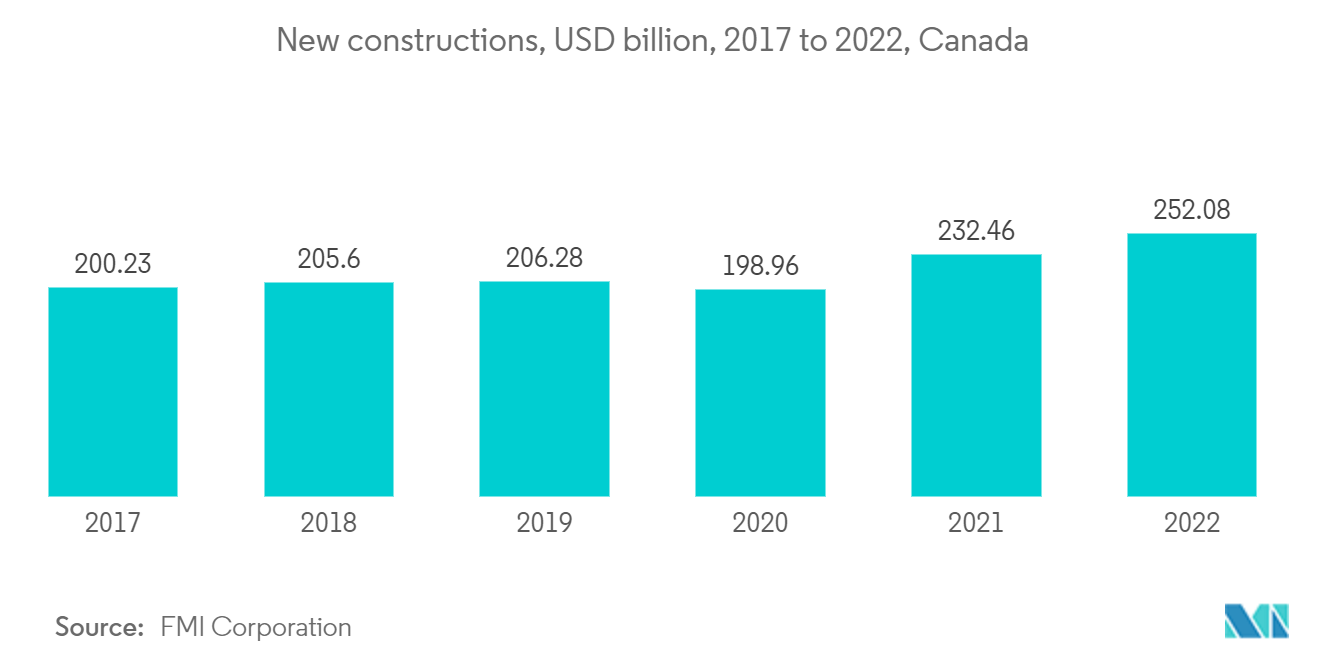
Usage of Timber in construction is Boosting the Industry
Demand for U.S.-produced softwood lumber, a backbone of the timber industry nationally, is at an all-time high, with all five end-use categories residential housing, repair and remodeling, non-residential construction, material handling, and others expecting record growth over the next decade.
The anticipated surge in growth is largely due to the non-residential construction sector, which is expected to grow at the fastest rate and increase its share of total softwood lumber usage at an annual rate of 2.3 percent over the next ten years, with US lumber consumption reaching an "all-time high" by 2030.
The Southern States, on the other hand, have positioned themselves as the lowest regional cost supplier of softwood lumber to the U.S. lumber market. Because of their huge timber supply, the Southern states are sometimes referred to as the country's wood baskets.
They possess almost 40% of the country's 521 million acres of forest land. A dozen new sawmill projects are proposed for the southern United States. As a result, the United States timber production will increase, and the instances are outstanding.
Despite the key benefits offered by cross-laminated timber, including eco-friendly prefabrication to conduciveness and myriad potential design applications, construction firms in the United States have been slow to adopt cross-laminated timber. However, the recent developments in the industry suggest that the user might grow over the next few years in the United States.
Cross-laminated timber (CLT) is emerging as a popular material of choice for both residential and commercial prefabricated structures across the United States. The inclusion of cross-laminated timber in building codes and insurance coverage suggests that construction firms may soon begin using cross-laminated timber more frequently in commercial and residential prefabricated projects. This can lead to increased demand from the short to medium-term perspective.
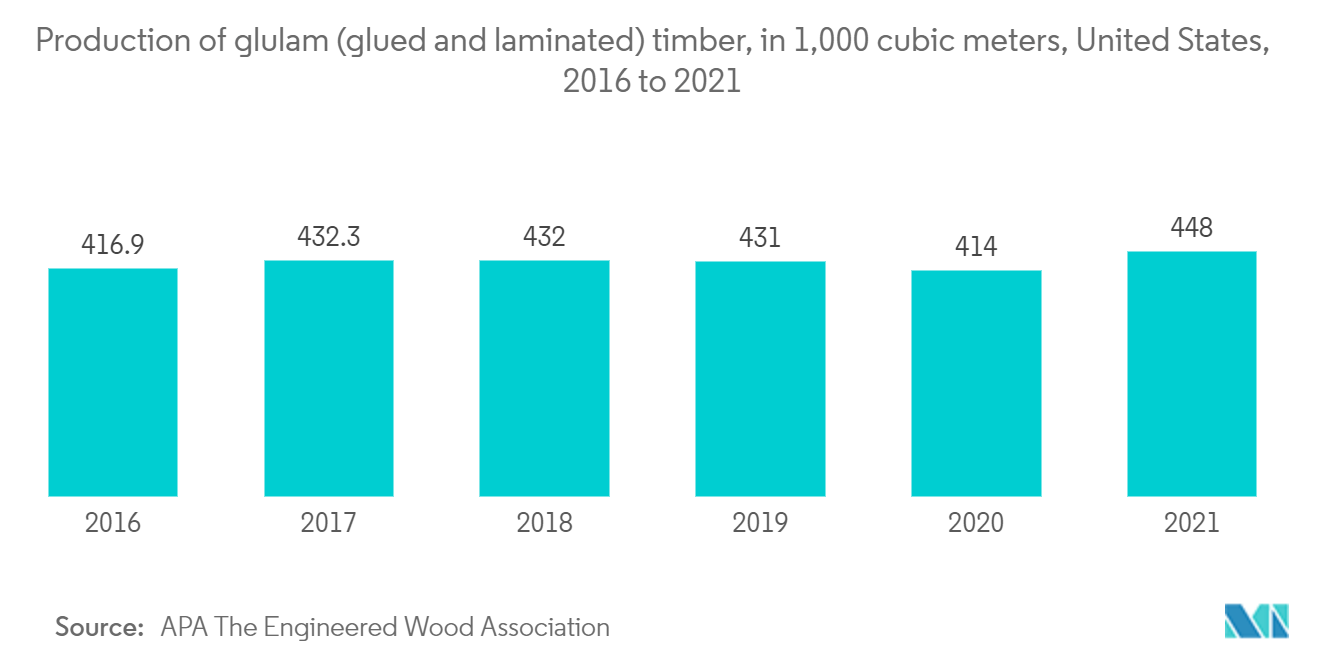
North America Prefab Wood Building Industry Overview
The report covers major players operating in the North America Prefab Wood Buildings Market. The market is highly competitive and fragmented in nature. To remain competitive in the market the major players in the market are constantly working to enhance their product offerings to meet the changing needs of the wooden prefab buildings market. The major players include Heinrich Brothers, Inc., Clayton Homes, Speed Space, Appalachian Log Structures, Inc., Alta-Fab Structures, and R.P. Crawford Co., Inc.
North America Prefab Wood Building Market Leaders
-
Heinrich Brothers, Inc.
-
Speed Space
-
Appalachian Log Structures, Inc.
-
R.P. Crawford Co., Inc.
-
Alta-Fab Structures
*Disclaimer: Major Players sorted in no particular order
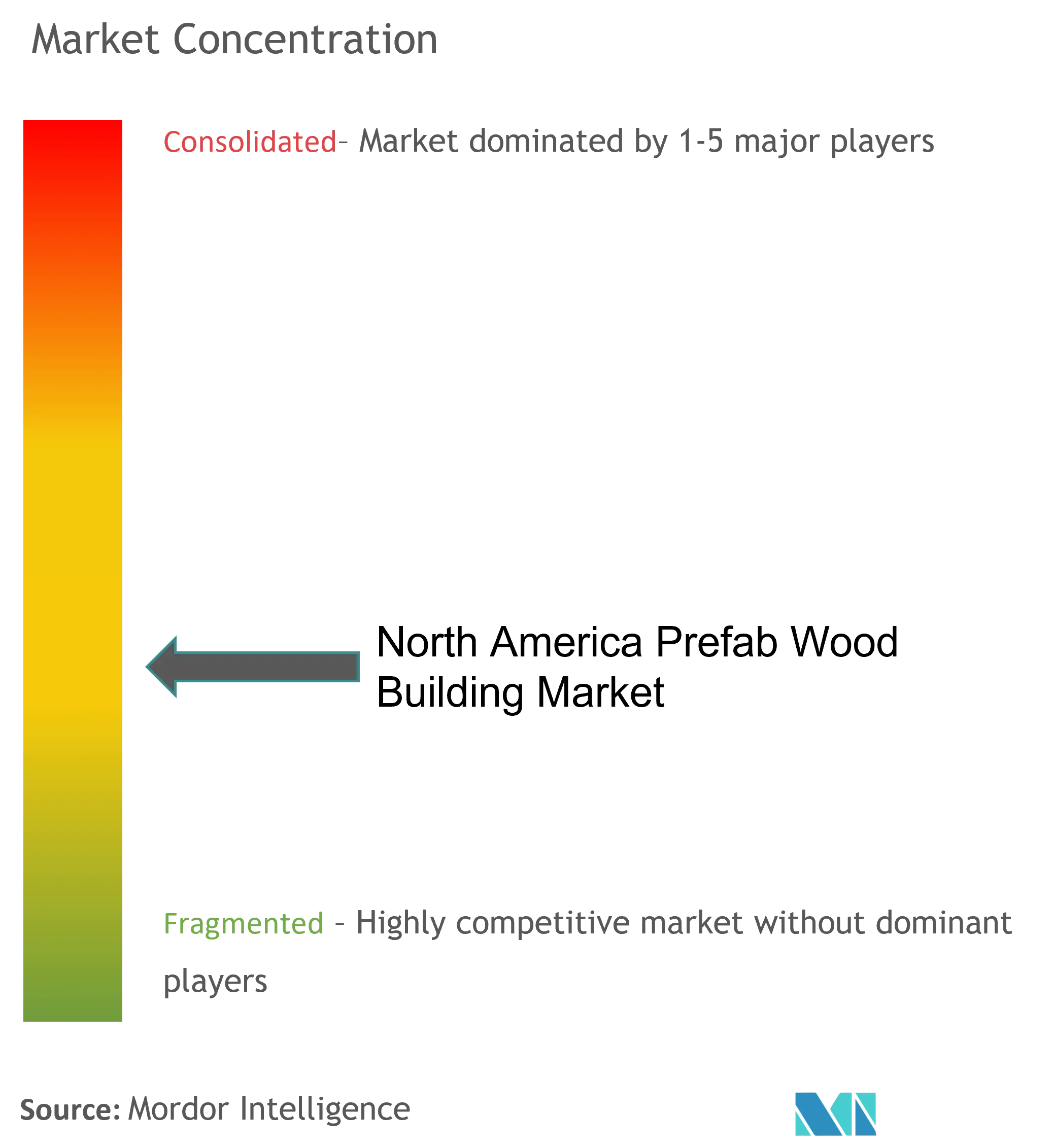
North America Prefab Wood Building Market News
- November 2022 - In Canada, a 40m2 tiny prefabricated steel and wood house has been installed for vacations and short stays. It was designed by Lloyoll Prefabs, a manufacturer of Premium Modular Homes brought to the site on a truck and set on a concrete slab. The open floor layout makes the most of every square inch, with a kitchen, bathroom, master bedroom, and loft bedroom with two more beds. It has a little ecological imprint, and its large apertures provide a better connection to the outside world.
- August 2022 - Volumetric Building Companies, the Philadelphia-based modular construction firm, recently acquired a Berwick, Pennsylvania, manufacturing facility to help expand operations in the northeast U.S. The facility's production will focus on manufacturing multifamily housing units of both steel and wood for use in buildings with three to 20 stories.
North America Prefab Wood Building Market Report - Table of Contents
1. INTRODUCTION
- 1.1 Study Deliverables
- 1.2 Study Assumptions
- 1.3 Scope of the Study
2. RESEARCH METHODOLOGY
3. EXECUTIVE SUMMARY
4. MARKET INSIGHTS AND DYNAMICS
- 4.1 Market Overview
- 4.2 Market Drivers
- 4.3 Market Restraints
- 4.4 Value Chain / Supply Chain Analysis
-
4.5 Industry Attractiveness - Porter's Five Force Analysis
- 4.5.1 Threat of New Entrants
- 4.5.2 Bargaining Power of Buyers/Consumers
- 4.5.3 Bargaining Power of Suppliers
- 4.5.4 Threat of Substitute Products
- 4.5.5 Intensity of Competitive Rivalry
- 4.6 Government Regulations and Initiatives
- 4.7 Technological Trends
- 4.8 Brief on Different Structures Used in the Prefabricated Buildings Industry
- 4.9 Cost Structure Analysis of the Prefabricated Buildings Industry
- 4.10 Impact of COVID-19 on the Market
5. MARKET SEGMENTATION
-
5.1 By Panel Systems
- 5.1.1 Cross-laminated timber (CLT) panels
- 5.1.2 Nail-laminated timber (NLT) panels
- 5.1.3 Dowel-laminated timber (DLT) panels
- 5.1.4 Glue-laminated timber (GLT) columns and beams
-
5.2 By Application
- 5.2.1 Single Family Residential
- 5.2.2 Multi-family Residential
- 5.2.3 Office
- 5.2.4 Hospitality
- 5.2.5 Others
-
5.3 By Country
- 5.3.1 United States
- 5.3.2 Canada
- 5.3.3 Mexico
- 5.3.4 Rest of North America
6. COMPETITIVE LANDSCAPE
- 6.1 Market Concentration Overview
-
6.2 Company Profiles
- 6.2.1 Heinrich Brothers, Inc.
- 6.2.2 Speed Space
- 6.2.3 Appalachian Log Structures, Inc.
- 6.2.4 R.P. Crawford Co., Inc.
- 6.2.5 Alta-Fab Structures
- 6.2.6 Excel Homes Group
- 6.2.7 Kbs Building Systems
- 6.2.8 Corrugated Metals, Inc.
- 6.2.9 Guerdon Modular Buildings
- 6.2.10 Clayton Homes, Inc.*
- *List Not Exhaustive
7. MARKET OPPORTUNITIES AND FUTURE TRENDS
8. APPENDIX
- 8.1 Macroeconomic Indicators (GDP Distribution, by Activity)
- 8.2 External Trade Statistics - Exports and Imports, by Product
- 8.3 Insights into Key Export Destinations and Import Origin Countries
North America Prefab Wood Building Industry Segmentation
Wooden prefabricated buildings involve premade pieces that are constructed off-time. Prefabricated wood building kits, similar to life-sized Legos, are made up of prefabricated components that are delivered and assembled on-site. Furthermore, this report covers market insights, such as market dynamics, drivers, restraints, opportunities, technological innovation, its impact, porter's five forces analysis, and the impact of COVID-19 on the market. In addition, the report also provides company profiles to understand the competitive landscape of the market.
The North America Prefab Wood Building Market is segmented By Panel Systems (Cross-laminated timber (CLT) panels, Nail-laminated timber (NLT) panels, Dowel-laminated timber (DLT) panels, and Glue-laminated timber (GLT) columns and beams), By Application (Single Family Residential, Multi-family Residential, Office, Hospitality, and Others) and By Geography (United States, Canada, Mexico, and Rest of North America). The report offers market size and forecasts for North America Prefab Wood Building Market in value (USD Billion) for all the above segments.
| By Panel Systems | Cross-laminated timber (CLT) panels |
| Nail-laminated timber (NLT) panels | |
| Dowel-laminated timber (DLT) panels | |
| Glue-laminated timber (GLT) columns and beams | |
| By Application | Single Family Residential |
| Multi-family Residential | |
| Office | |
| Hospitality | |
| Others | |
| By Country | United States |
| Canada | |
| Mexico | |
| Rest of North America |
North America Prefab Wood Building Market Research FAQs
What is the current North America Prefab Wood Building Market size?
The North America Prefab Wood Building Market is projected to register a CAGR of greater than 4.5% during the forecast period (2024-2029)
Who are the key players in North America Prefab Wood Building Market?
Heinrich Brothers, Inc., Speed Space, Appalachian Log Structures, Inc., R.P. Crawford Co., Inc. and Alta-Fab Structures are the major companies operating in the North America Prefab Wood Building Market.
What years does this North America Prefab Wood Building Market cover?
The report covers the North America Prefab Wood Building Market historical market size for years: 2020, 2021, 2022 and 2023. The report also forecasts the North America Prefab Wood Building Market size for years: 2024, 2025, 2026, 2027, 2028 and 2029.
North America Prefab Wood Building Industry Report
Statistics for the 2024 North America Prefab Wood Building market share, size and revenue growth rate, created by Mordor Intelligence™ Industry Reports. North America Prefab Wood Building analysis includes a market forecast outlook to 2029 and historical overview. Get a sample of this industry analysis as a free report PDF download.



